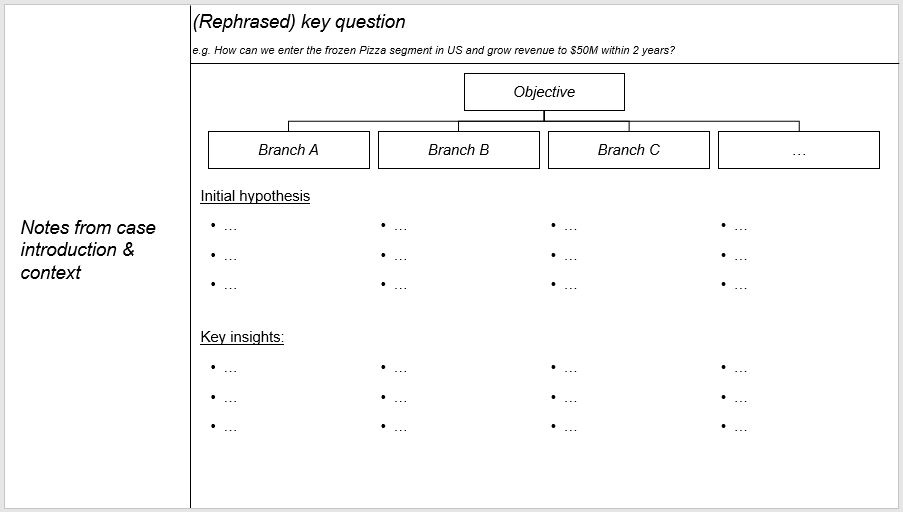Note taking is of course a critical piece of a strong case delivery, so it will pay off to practice this early on in your preparation.
Whatever system you chose (and practice), it needs to fulfill 3 main purposes:
- Allow you to note down the critical data and information you hear during the case prompt and have the readily available whenever you need them
- It needs to enable you to note down an initial framework and track the execution against it
- It should provide room to store your key insights (1-2 numbers or 1 short bullet point per branch of your framework)
There are certainly many different styles of note taking that provide these three functions, so you should find our which one works for you and enables you to focus on the case execution, rather than the note taking. Keep in mind that you should practice this system early on in your journey, so you are comfortable with this method when you go into the interviews.
Find below a screenshot of the notetaking system that works for me personally. In this system, I first draw one vertical and one horizontal line. Then I use the column on the left side to take the initial notes during the case prompt and clarifying questions. Then I write down the key question of the case in the top row and develop the framework in the main area on the page.
During the case, I scribble less important stuff on separate pages (e.g. notes during the quant part). However, I will write down the key insights of each branch of the framework at the bottom of my main page. That way, when I get to the recommendation, I can simply read the notes from left to right to have the supporting arguments for the case recommendation.





